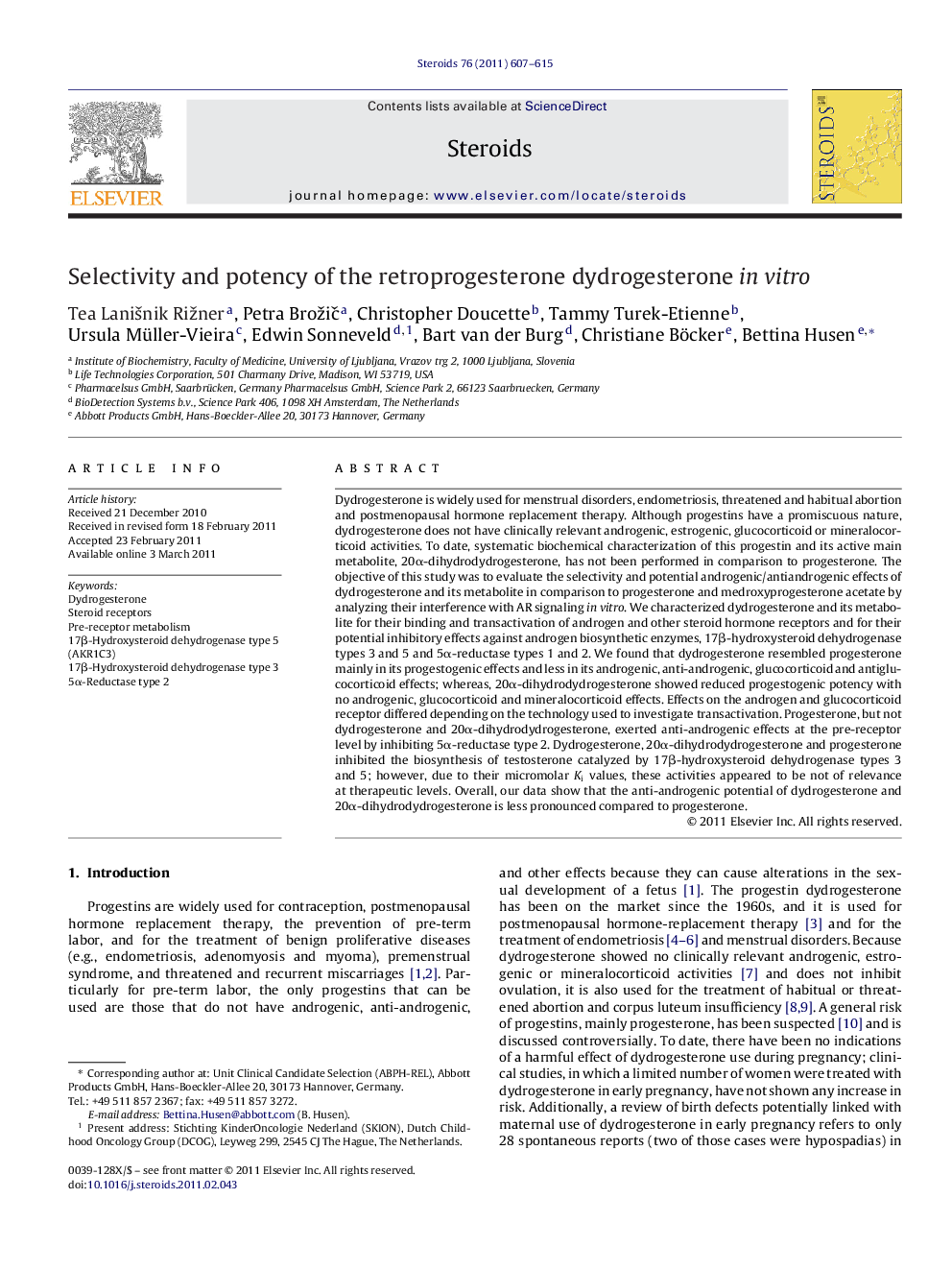| کد مقاله | کد نشریه | سال انتشار | مقاله انگلیسی | نسخه تمام متن |
|---|---|---|---|---|
| 2028108 | 1070394 | 2011 | 9 صفحه PDF | دانلود رایگان |

Dydrogesterone is widely used for menstrual disorders, endometriosis, threatened and habitual abortion and postmenopausal hormone replacement therapy. Although progestins have a promiscuous nature, dydrogesterone does not have clinically relevant androgenic, estrogenic, glucocorticoid or mineralocorticoid activities. To date, systematic biochemical characterization of this progestin and its active main metabolite, 20α-dihydrodydrogesterone, has not been performed in comparison to progesterone. The objective of this study was to evaluate the selectivity and potential androgenic/antiandrogenic effects of dydrogesterone and its metabolite in comparison to progesterone and medroxyprogesterone acetate by analyzing their interference with AR signaling in vitro. We characterized dydrogesterone and its metabolite for their binding and transactivation of androgen and other steroid hormone receptors and for their potential inhibitory effects against androgen biosynthetic enzymes, 17β-hydroxysteroid dehydrogenase types 3 and 5 and 5α-reductase types 1 and 2. We found that dydrogesterone resembled progesterone mainly in its progestogenic effects and less in its androgenic, anti-androgenic, glucocorticoid and antiglucocorticoid effects; whereas, 20α-dihydrodydrogesterone showed reduced progestogenic potency with no androgenic, glucocorticoid and mineralocorticoid effects. Effects on the androgen and glucocorticoid receptor differed depending on the technology used to investigate transactivation. Progesterone, but not dydrogesterone and 20α-dihydrodydrogesterone, exerted anti-androgenic effects at the pre-receptor level by inhibiting 5α-reductase type 2. Dydrogesterone, 20α-dihydrodydrogesterone and progesterone inhibited the biosynthesis of testosterone catalyzed by 17β-hydroxysteroid dehydrogenase types 3 and 5; however, due to their micromolar Ki values, these activities appeared to be not of relevance at therapeutic levels. Overall, our data show that the anti-androgenic potential of dydrogesterone and 20α-dihydrodydrogesterone is less pronounced compared to progesterone.
► Dydrogesterone resembles progesterone mainly in its progestogenic effects.
► Dydrogesterone and its main metabolite have no agonist activity towards AR, MR, GR.
► Progesterone exerts anti-androgenic effects by inhibition of 5α-reductase type 2.
► Dydrogesterone, its main metabolite, progesterone, and MPA inhibit 17β-HSD5 and 3.
Journal: Steroids - Volume 76, Issue 6, May 2011, Pages 607–615